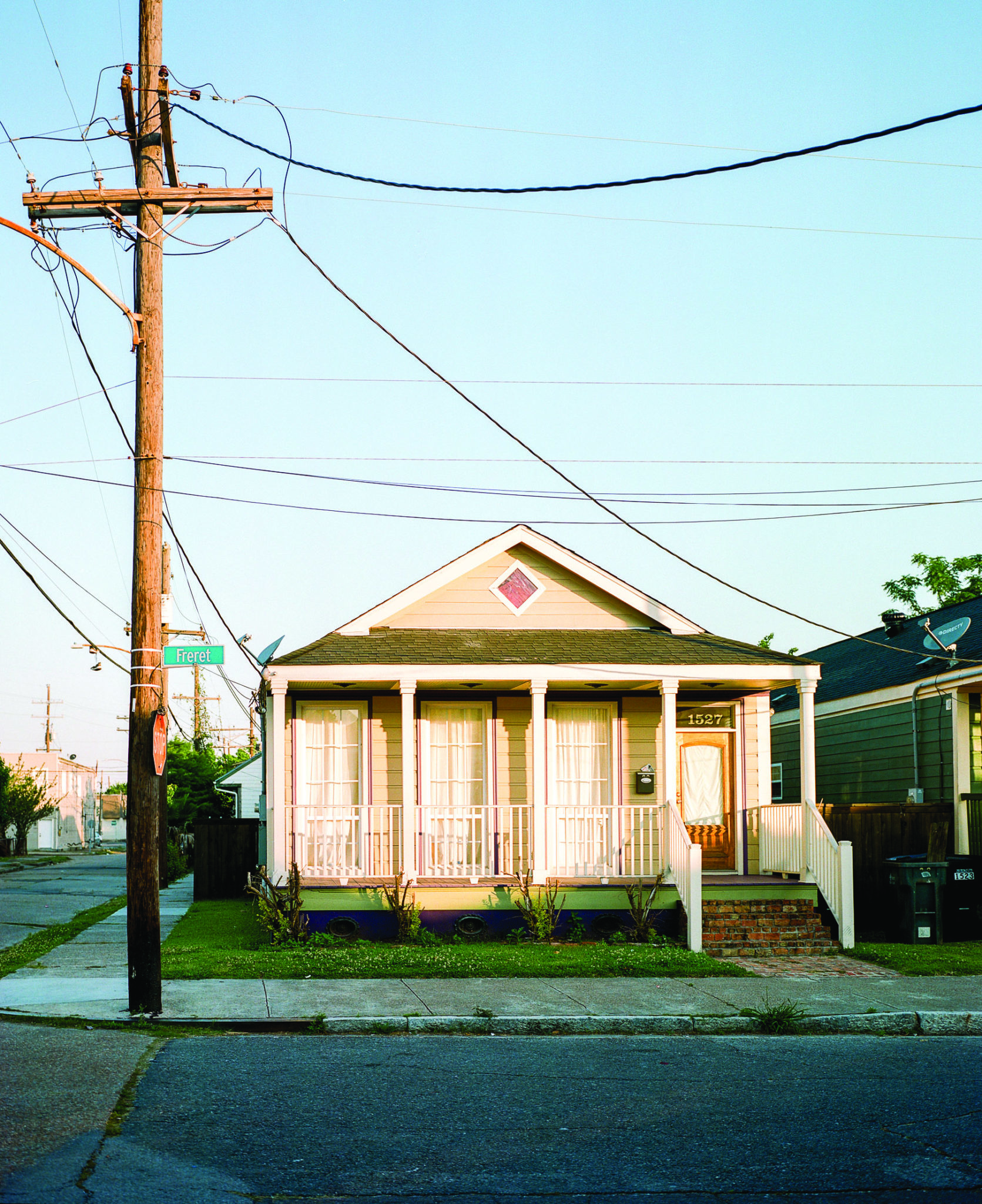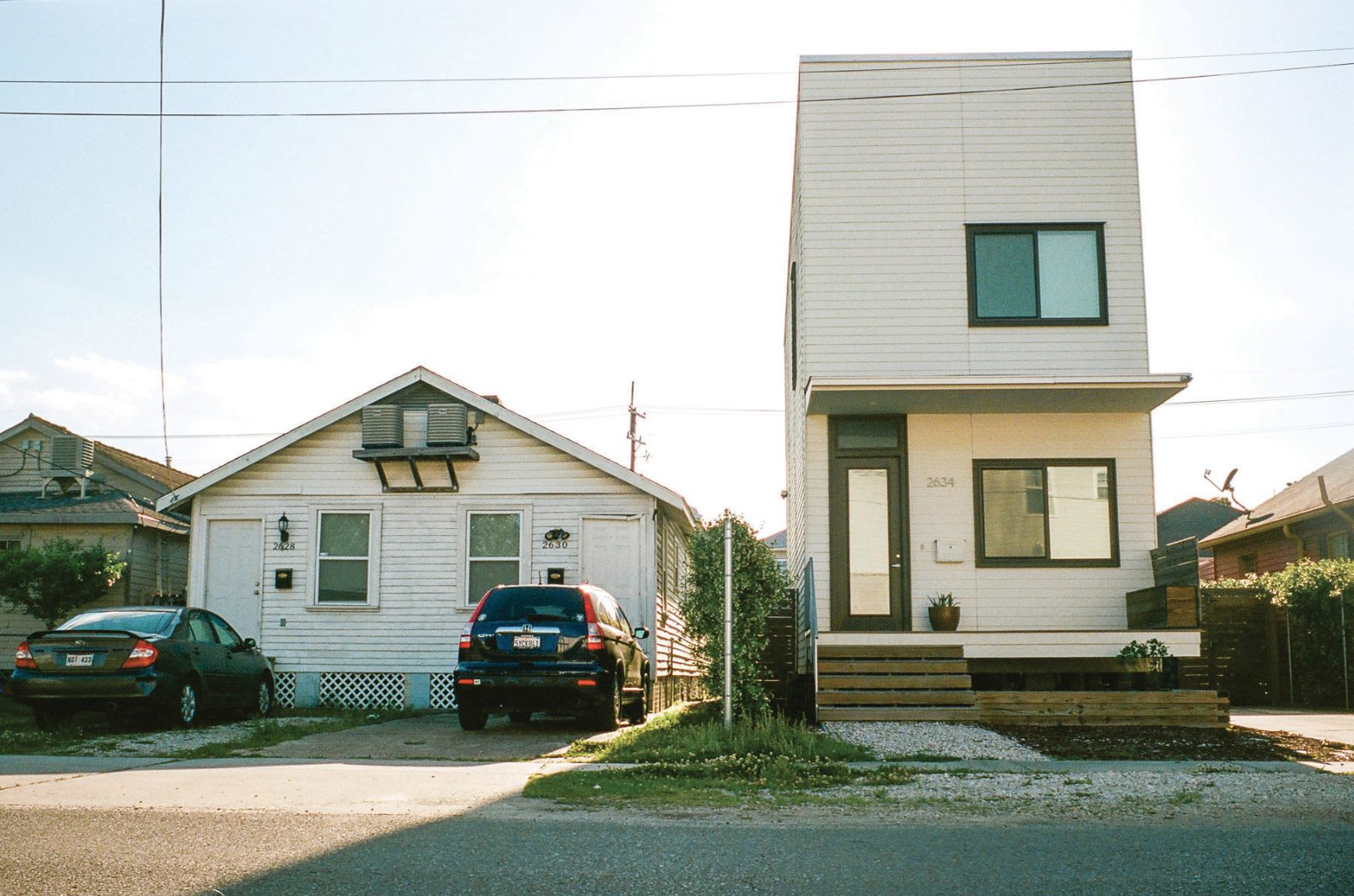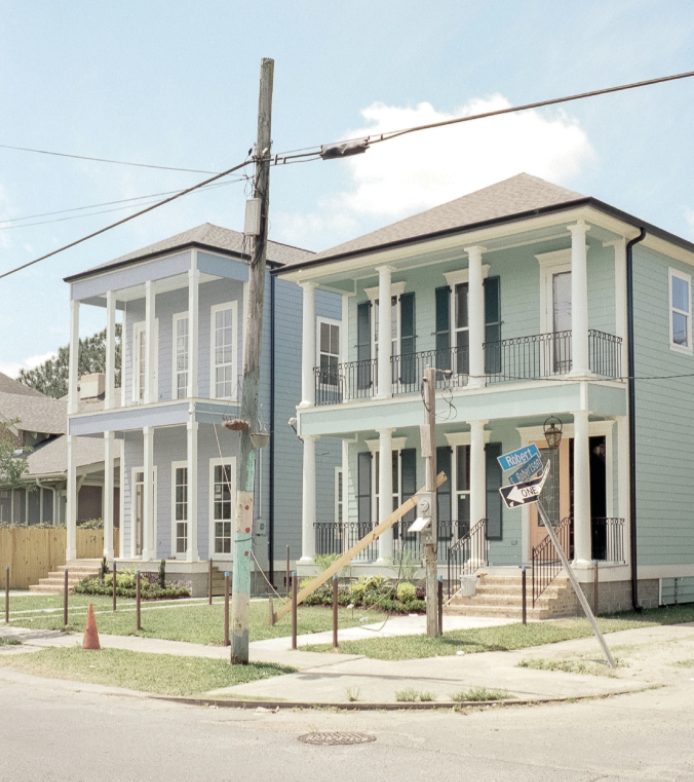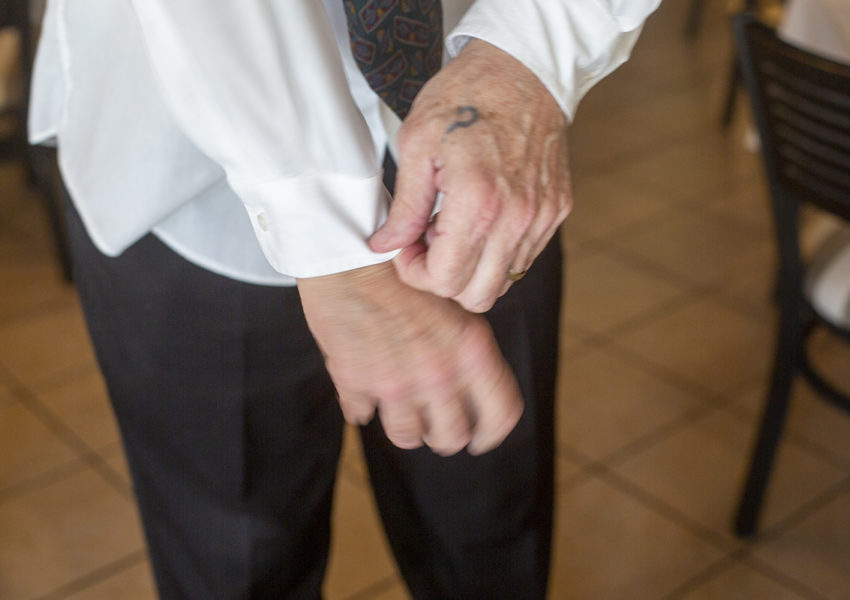The Taking of Freret Street In New Orleans, losing a way of life
By Maurice Carlos Ruffin
There is a 2011 video of me online that I’m ashamed of. In the footage, I’m cheerful, animated. In my orange and black polo shirt, I look a bit like Tigger from Winnie the Pooh. Off camera, someone asks about my hope for the future of my hometown, New Orleans. I’m giddy. “I think if you come to New Orleans right now,” I say with an eighty-eight-key grin, “you’re going to find people who want to help you.”

The city was still recovering from Hurricane Katrina and the levee failures. I wanted to attract people who could save the day. With the benefit of hindsight, I realize I had no idea what an influx of folks might mean. In a city divided by race and class, I wished for a legion of woke newcomers to help bridge the divide. Maybe I should have known better.In the earliest days of the recovery after the events of Hurricane Katrina, there had been talk of giving up on neighborhoods like Gentilly and the Lower Ninth Ward. Let those areas devolve to green space, people said. Displaced families can find somewhere else to live, people said. Around town streets suffered the jack-o’-lantern effect: an occupied house here, an empty lot there. With so many people gone, New Orleans seemed like a sickly patient, smaller, quieter, weakened. I wondered whether the city would survive. But by 2011, the electrical grid was mostly restored, and the water said to be lead-free. We were the fastest growing city in America. It was obvious that the patient would not die, that last rites would not be given, that the city would get up and dance again. We had reason to hope.

We natives—who managed to rebuild our houses—were ecstatic. I was ecstatic. In the video, that hope is apparent. I’m about thirty pounds heavier than I am now. It’s a good thirty pounds. Weight I packed on trying all the new restaurants that had popped up. Six years after the storm, I could eat migas for breakfast, pho for lunch, and roasted bone marrow for dinner, options that weren’t readily available before. But something was wrong.

When my wife and I bought our house in the Central City neighborhood in 2003, the neighborhood wasn’t inviting. Yes, our next-door neighbor had been a high school principal and kept her home immaculate. But the corner dwelling was tumbledown with flayed siding and a slumped brick staircase. Our other next-door neighbors drove a massive 1970s Suburban that belched gray smoke. They kept a pit bull in the backyard near our bedroom that never barked until my head touched the pillow. But all my neighbors were black like me. I would later understand that it was a quality of modern segregation that threw us together despite our socioeconomic differences. We defined a classless society in which a lawyer, a retired principal, itinerant renters, and a house full of unemployed people live shoulder to shoulder. Black communities have long been shaped by redlining, restrictive covenants, and other forms of discrimination.
A few blocks over lay the mostly fallow commercial corridor centered on Freret Street. Like my street, Freret was undercapitalized. Many of the storefronts were vacant. The restaurants that operated before the storm were no-frills establishments. But we loved them. They were mostly black-owned. You knew it by the food. During law school, my wife and I often stopped at Dunbar’s Creole Kitchen for fried chicken with jambalaya or red beans and rice with pork chops. We stopped at Antoine’s Bakery for almond cake and cookies. During Mardi Gras, they served the only king cake I fantasized about, the perfect balance of gooey bread and hyper-sweet icing. I ate mine with chocolate milk. Neither Dunbar’s nor Antoine’s would come back post-storm. Change was on the menu.

The first shift I noticed was around 2010. Returning from work, I saw a young white woman jogging near my house. This would have been completely unremarkable near Audubon Park where Tulane and Loyola University students exercised, where I usually ran laps. But this was my street. My dad, an ex-tank driver in the Army, once told me he didn’t feel safe coming to my neighborhood. But over time, walkers, joggers, bicyclists, even mothers with strollers would become a common sight on the streets around my house, as if the tony Uptown neighborhood had acquired my street in a sale I didn’t profit from.
I knew the city was changing, but I didn’t know how widespread it was or if others saw what I saw.
Nearly half of my original neighbors did not return post-Katrina. Rents went up, so the unemployed or underemployed could not afford to return. Some homeowners were stiffed by insurance companies that refused to pay out despite collecting premiums for decades. Others couldn’t navigate the complicated government loan programs that poured hundreds of millions of dollars into commercial projects in the Central Business District but proved virtually inaccessible for many homeowners. Some families restored their homes only to be priced out by rising property taxes and upside-down mortgages.
The New Orleans Data Center says my neighborhood saw some of the largest population increases between 2010 and 2017 adding one thousand new households. My block reflects this truth. A group of students moved in a few doors down. A family of four took over the house where the pit bull used to bark all night. A local politician purchased, razed, and replaced the corner tumbledown with a gorgeous ranch-style house that faces away from the street, as if the owner didn’t like looking at the three black families that surrounded the new house. Not a single person or family who bought into my block since Katrina is black. One hundred thousand black New Orleanians did not return to the city. I lost friends, strangers, and, bit by bit, a way of life.
I knew the city was changing, but I didn’t know how widespread it was or if others saw what I saw. I asked friends. Marti Dumas, a children’s book author, mother, and New Orleans native, saw it, too.
“Freret Street has become unrecognizable,” Dumas said. “Tiny improvements snowballed in just a few years into a place that no longer holds any of the original businesses, businesses that had survived years of relatively low traffic. It seems bizarre that more foot traffic and attention to the area would make it harder for these businesses to stay afloat.”

After the storm, Freret was slow to attract new commerce. Freret Street PoBoy and Donut Shop, a classic working-class New Orleans eatery, sprung up like a morning mushroom. Those waiters, housecleaners, and streetcar drivers who fuel the hospitality industry needed a low-cost way to fill up before their shifts. Freret Street PoBoy had it all. Fried chicken plates, smothered pork chops, grits, eggs, and sausage. My household was partial to their delicious apple fritters, which were big and crusty. You got your money’s worth. But in late 2017, I was out for a jog when I noticed someone picked the mushroom. The shop was gone. Up the block, a new effrontery. Someone decided to build a Starbucks.

New Orleans can be an insular city with a small-town mentality. We cherish our institutions. An ice-cream shop that dates back to the Roosevelt Administration (Teddy, not Franklin). Several restaurants with roots predating the Civil War. A bar that was arguably here before America was founded. As a native who has traveled extensively, I’ve always thought we had fewer chain restaurants, bars, and coffee shops than most cities. The introduction of a billion-dollar coffee corporation to a quiet neighborhood corner—my neighborhood corner—is disturbing. People come to New Orleans for our quirky, original establishments. Not the flat white they had in the airport on the way down. But Starbucks is just a symptom. It’s the end stage of a cultural flattening.

Darlene Wolnik talked to me about how what we eat has been altered. She explained how mirlitons represent my changing hometown. “Back when the city had hundreds of chain-link fences, mirliton vines thrived and could be found everywhere. Our grandparents stuffed shrimp in them and made it a holiday. Once those chain-link fences were torn down for high wooden walls, the mirliton had nothing to hang on and largely disappeared.” Darlene had pinpointed the connection between the choice of so many New Orleanians to build fences you could see through versus high-collared bulwarks to blot out the world. A desire to isolate killed the mirliton.
My grandparents’ house in the Lower Ninth Ward had chain-link fences, as did the houses of many of my aunts and uncles. They all included mirlitons in their toolbox of soul food ingredients. My parents and my mother-in-law also made great stuffed mirlitons, which looked like oversized green tulips crammed with a beef, shrimp, and vegetable dressing. Many an afternoon, I sat at their tables chomping on the savory, palm-sized treats. You could blindfold me, and I’d be able to tell you which oven they came from. My family scooped out the innards of the vegetable and stuffed it with a mix heavy on the beef, like hamburgers on a vegetable bun. My mother-in-law’s were based on her mother’s recipe. Their mirlitons were mostly breading and shrimp. Much more delicate than what I grew up on. I loved them all.
Many post-Katrina restaurants have something in common: pretensions. They are well-capitalized, well-lit, and probably well-insured. When their owners went to the bank and asked for loans, they got the cash. When they called on parents and friends for investment capital, checks must have come in the mail. Dreams blossomed. Nothing was deferred.
 This contrasts to the experiences of many black business owners. Studies indicate blacks at present have about five percent of the wealth assets of their white counterparts. There are exceptions, but the few iconic black restaurants in town generally served great food but looked as if they were operating on the thinnest possible stream of income. I’m reminded of Barrow’s, a shack dating to the 1940s where wild-caught, exquisitely fried catfish was the specialty. The interior of the restaurant, which was opened by William Barrow and taken over by his son Billy, was covered in 1970s-style wood paneling, which gave it the feel of a beloved godmother’s den. Billy Barrow died in the 1990s in an accident and his family continued the tradition. But Katrina destroyed the eatery. A replacement location on the other side of the river did not last long.
This contrasts to the experiences of many black business owners. Studies indicate blacks at present have about five percent of the wealth assets of their white counterparts. There are exceptions, but the few iconic black restaurants in town generally served great food but looked as if they were operating on the thinnest possible stream of income. I’m reminded of Barrow’s, a shack dating to the 1940s where wild-caught, exquisitely fried catfish was the specialty. The interior of the restaurant, which was opened by William Barrow and taken over by his son Billy, was covered in 1970s-style wood paneling, which gave it the feel of a beloved godmother’s den. Billy Barrow died in the 1990s in an accident and his family continued the tradition. But Katrina destroyed the eatery. A replacement location on the other side of the river did not last long.

By contrast, the new establishments on and around Freret serve fair-trade coffee. One has a high-temperature pizza oven that probably cost more than some of the old restaurants cleared in a year. There’s a shop that sells blue-crab omelets and coconut nectar. That one has a yoga studio above it. Namaste. Full disclosure: I love this place. Just like I love the newish place that sells $8 hot dogs, the newish place that sells $12 lamb burgers, and the newish place that sells a nearly $30 charcuterie board. But there was a restaurant before the storm that sold $0.99 breakfast plates to service industry workers. An egg, a sausage link, a biscuit and grits. This restaurant, at the corner of Washington and Simon Bolivar avenues, was black-owned and didn’t have tables. I’m not sure it even had a name. But I loved it, too. And like so many others it’s gone. I wonder what one of those workers thought the first time they saw that charcuterie board. Did they feel like an outcast in their own neighborhood? I didn’t. At least not entirely. I could afford the charcuterie, which I ate and loved. I felt that I was somehow on both sides of the line: a gentrifier and a casualty of gentrification.
Writer Fatima Shaik says, “When we don’t interact, we’re all poorer for it.” Shaik’s family has lived in the area since the late nineteenth century. She’s seen much change and thinks we should be prepared for more. “We’ll see inequalities we weren’t aware of before. You’ll see how legal systems work. You’ll see how tax systems work.”
Gentrification is accelerating beyond New Orleans. Brooklyn, Harlem, San Francisco, Amsterdam, and Berlin residents know this. They also probably know that although racism and white supremacy are frequently intertwined with these changes, gentrification affects non-blacks as well. Gentrification tends to happen in stages. An economically depressed neighborhood sees the arrival of white bohemians, poets, writers, sculptors, printmakers, and folk musicians. Then a young, professional-class family arrives, perhaps with a child and a modest trust fund in tow. Soon they are joined by others. A trickle becomes a flood. Then banks heavily invest, spurring the kind of shifts we have seen on Freret Street and elsewhere.
The poet Kelly Jones is one of many white residents who were pushed out by rising living expenses. They and their husband worked hard. But they couldn’t keep up. “I was working five part-time jobs in order to make the rent and cover bills.” Jones saw the changes coming. They were occasionally asked by out-of-towners whether New Orleans was a place they liked to live. They always hesitated because although they loved the city, they didn’t want to encourage others to relocate. Jones, who moved to North Carolina, is introspective. “It makes me wonder what effect all this growth, all this rejuvenation, is having on the city and its residents. Part of me wants to be excited, to be happy for those who are doing well. But a larger part of me is unable to ignore that some people are getting pushed out, and some of the people who are doing well are doing so because others were pushed out. And I feel guilty for unintentionally being part of that.”
Jones has their guilt, as I have mine. Talking to Jones makes me realize that although we are complicit, larger forces are at work. These forces affect people who would seem to be above it all. People like John Boutté, the singer. Boutté is a local institution. He’s known for his velvety voice and stage presence. He sang the theme song to the New Orleans–set HBO show Treme and stole a scene at the end of season one. Boutte lived in the heart of Treme, the neighborhood, but no longer saw the logic in paying steadily increasing rent. He purchased a house an hour away on the far side of Lake Pontchartrain. “Everyone has always wanted to live here,” he said of New Orleans. “There are always people who want to take advantage of disasters.”
But some who sought to take advantage of the changes have fallen victim to them. Gentrification arrived earlier in areas like the Marigny, Bywater, and Treme. Well-appointed restaurants like Maurepas, Oxalis, and Café Henri shuttered after relatively short lives. The cause? The restaurateurs thought they were opening approachable places for neighborhood people. But out-of-towners bought houses in these neighborhoods and converted them to Airbnb inventory. The tourists had no taste for neighborhood restaurants. They wanted to dine Uptown or in the French Quarter as they’d been instructed.
This cycle of events would appear to be unsustainable. Often, when a beloved spot closes, it’s replaced by something more homogenous, a gastropub one might find in downtown Manhattan or a franchised sandwich shop. When visitors arrive in New Orleans to find the same food they ate at home, those visitors might decide to travel elsewhere. If all the local restaurants die out, no one will come. Everyone will suffer. Boutte says he isn’t too upset about the upheavals. “There’s no need to burn it down,” he said. “Just wait it out. The bubble is going to pop.”

I wish I could be as sanguine as Boutte. Gentrification couldn’t be all bad. Could it?, I asked Jean-Paul Villere, a realtor with an office on Freret.
Villere said that market forces would determine the outcome of the gentrification process. Those forces would replace blight with business and ensure that every property fulfilled its best use. Villere is factually correct. Market forces drive development and innovation. Development and innovation give us shiny gelaterias and pizzerias that crank out pies in one hundred eighty seconds.
I don’t know what market forces say about the driving out of families and restaurants that carried on the foodways of New Orleans without pretension. Market forces didn’t destroy Dunbar’s or Antoine’s Bakery so much as displace them. Like Barrow’s, Antoine’s landed in Jefferson Parish on the other side of the Mississippi River, about six miles away. After several moves, including a term as the in-house cafeteria at Loyola Law School, Dunbar’s claimed an unassuming plot next to a pizza chain. I’m glad to know that I can get their fried chicken, gumbo, and jambalaya, but I’m bothered that the only way to get a slice of fresh almond cake from Antoine’s is to leave New Orleans. I’m reminded of what John Boutte said when I asked whether he was mad about the changes.
“I won’t say I’m mad,” he said. “My grandmother said only dogs get mad. There is a sense of loss that the older people can’t live out their lives in their homes. Their kids can’t either. But change is the fabric of the city.” To paraphrase James Baldwin, to live in New Orleans and be relatively conscious is to be in a rage most of the time. My rage is tempered by the resilience of my city, which still makes a delicious stuffed mirliton.

Maurice Carlos Ruffin is the nonfiction columnist for Virginia Quarterly Review. His work has also appeared in the Los Angeles Times, Kenyon Review, and Unfathomable City: A New Orleans Atlas. One World Random House will publish his novel, We Cast A Shadow, in 2019.




